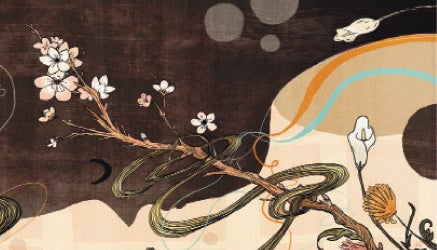Art in Bloom

These days, it’s all too easy to lose touch with the natural world. Fortunately, as the centuries-old Japanese
art form known as ikebana attests,
you can strengthen your relationship
with nature in your very own home. Since the 15th century, practitioners
of ikebana have used flowers, as well
as branches, buds, moss, and leaves,
not only to create beauty, but also
to inspire a deeper connection
with nature. Harmony is a reigning theme in ikebana; arrangements are at once asymmetrical and balanced, evoking both energy and a sense of calm. It may be no surprise that practicing ikebana can reward you
with the kind of clarity and peace of mind you might expect from a meditation session.
Of the more than 2,000 registered schools of ikebana, just a handful are taught outside Japan, including Ikenobo, the original classical school, and Ohara and Sogetsu, both modern schools. Sogetsu tends to value individual expression and experimentation over traditional rules.
To lay the groundwork for good technique, consider signing up for formal instruction, suggests Jane Redmon, president of the Washington, D.C., chapter of Ikebana International
(ikebanahq.org). Arboretums may host classes, and local Ikebana International chapters can provide lists of teachers and events nearby. Just don’t expect to learn everything all at once. “It’s a lifelong learning experience,” Redmon notes. “I’ve been studying ikebana for over 30 years,
and I’m still learning.”
Eco-Shopping Tip
Conventionally grown flowers are usually produced with pesticides that harm both workers and the environment. Look for organic or sustainably grown flowers instead. You can find local growers at farmers’ markets or at organicbouquet.com and californiaorganicflowers.com.